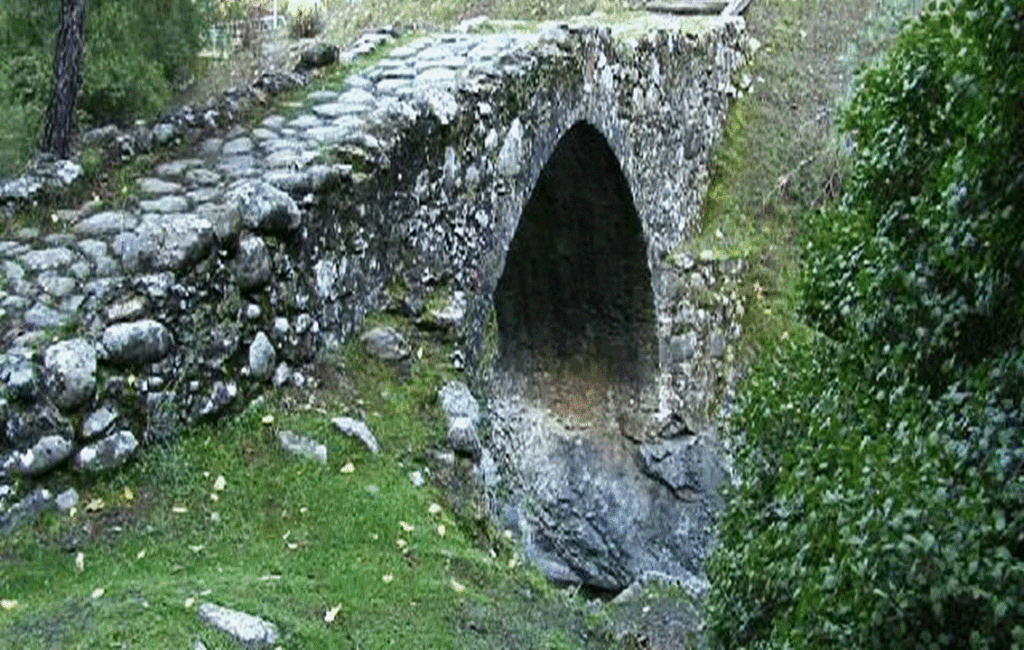THE ARCHITECTURAL MARVELS OF THE RENAISSANCE
A TRADING EMPIRE AT ITS CORE
The Venetian era began in Cyprus in the year 1489 and lasted up until 1571. The Venetians were effectively a trading empire and their interest in Cyprus was a direct attempt to strengthen their influence over trade routes in the Eastern Mediterranean. They effectively seized control of the island after the last Queen of Cyprus, Catherine Cornaro, abdicated her throne in 1489. This ended the independent Lusignan Cypriot kingdom and ushered in a new profound Venetian era that would last nearly 100 years. As a way to secure their grip on the island, the Venetians immediately set about improving infrastructure. This led to several sites being identified for the installation of new bridges. The bridges that are dotted throughout the island form part of the old camel trail. The camel trail was installed to extract anything of value on the island that could be traded.
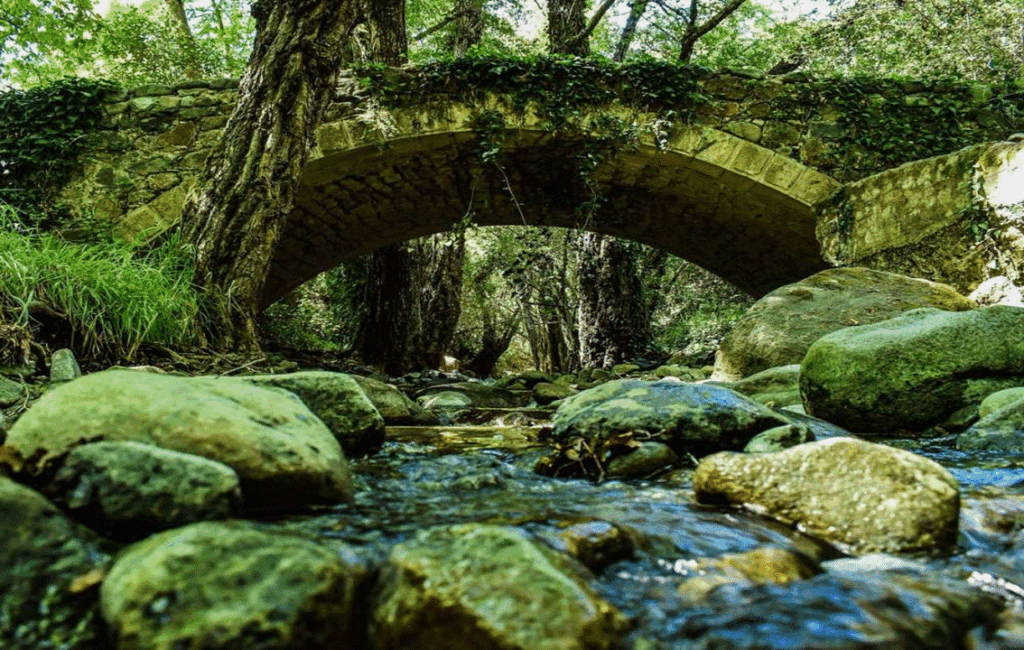
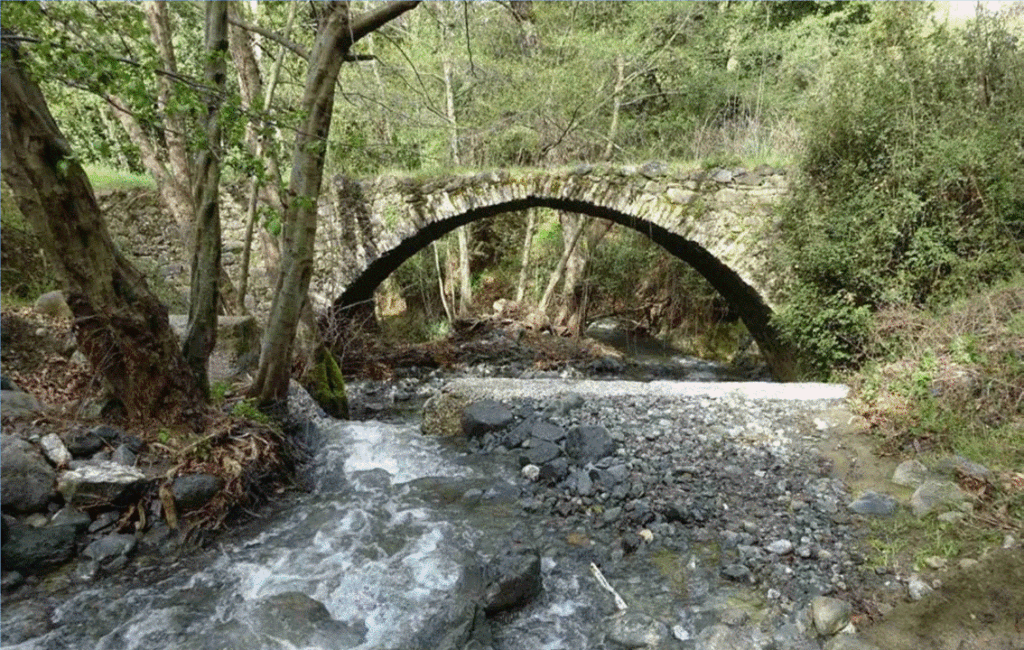
NEW BRIDGES FOR NEW RULERS
The Venetian era in Cyprus brought with it a general transformative period, and Venetian administrators immediately identified the need to improve the transportation of various goods across the island. Venetian architects set about implementing the design of several new bridges in quick succession. The construction of several sturdy stone bridges facilitated trade in multiple locations across the island. The new bridges were characterised by their distinct architectural style, blending Gothic and Renaissance elements. The bridges today are not only a testament to the Venetian era, but also to their engineering prowess and their commitment to enhancing economy and transport across the island.
A FLOURISHING TRADE
After the island’s architectural landscape was enhanced by these structures, trade began to flourish. A new bustling network of camel trails, linking remote mines in the mountains to bustling coastal ports, was created. The bridges also connected various villages and towns to the main cities and all regions in Cyprus became more easily accessible, further ensuring the flow of transportation of various goods.
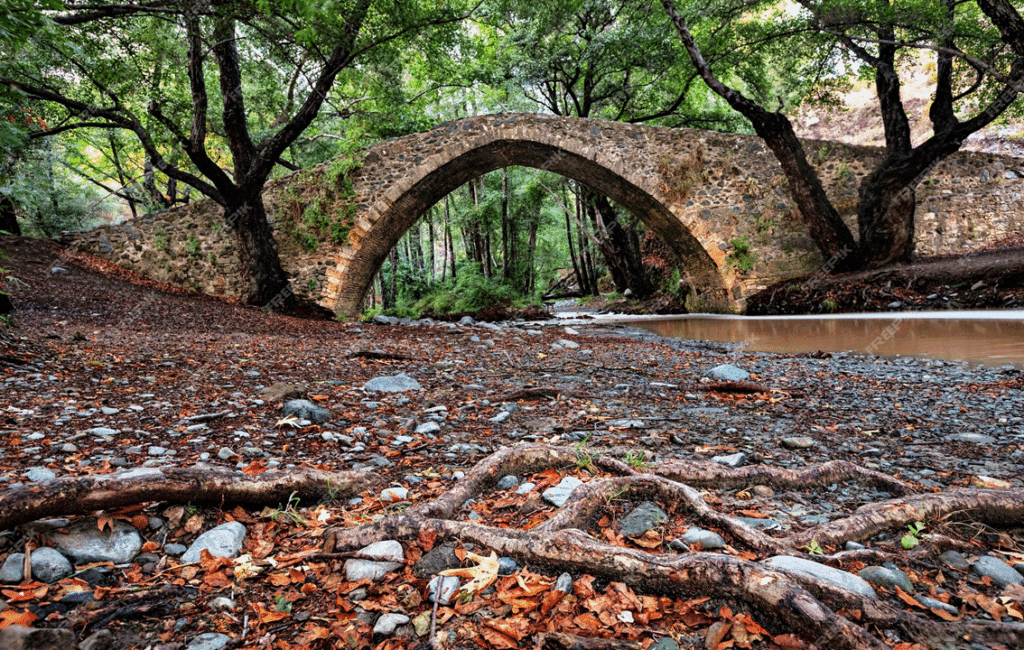
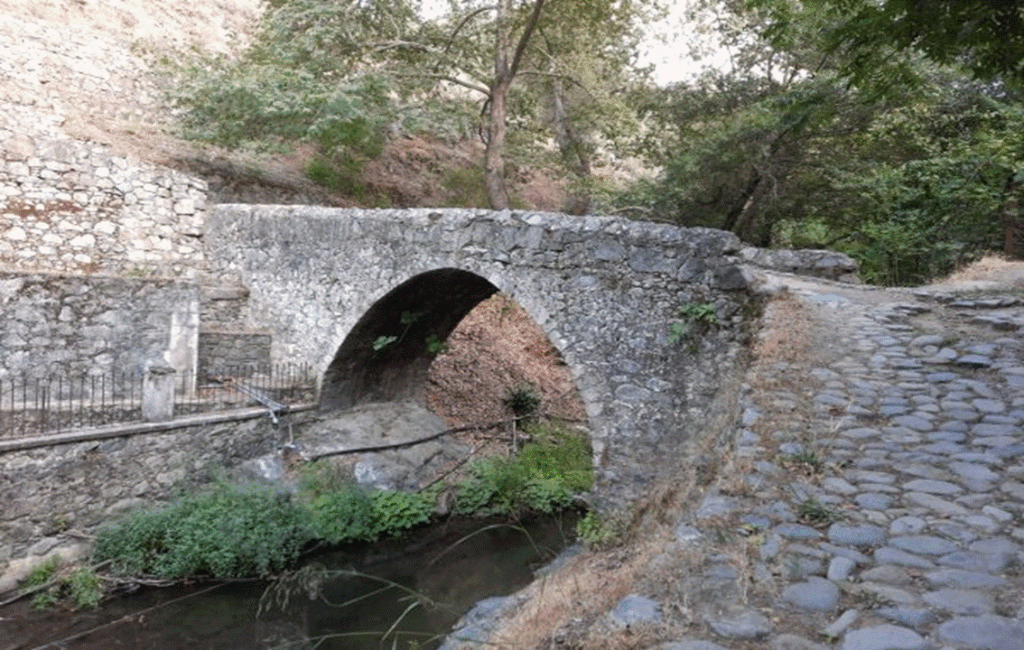
LOCALLY SOURCED STONE
Venetian bridges often feature several architectural elements indicative of their design principle. All bridges followed a similar pattern of design and consisted of a single semi-circular arch construction. Typically built from locally sourced stone, they all display a robust sturdy design that features the central arch. This simple effective design allows for both structural strength and aesthetic appeal. All the bridges were effectively built to distribute weight evenly thus alleviating the pressure. This has been an essential factor for their survival through the centuries to this day.
PICTURESQUE LOCATIONS
Several of these bridges are situated in often picturesque locations, bridging rivers, gorges, and valleys. They also serve as focal points of the landscapes they inhabit. Their harmonious integration into the natural scenery exemplifies the Venetian Renaissance movement. This movement emphasised the blending of human creations with nature. These bridges were also designed to reflect the wealth and status of the Venetian nobility that settled on the island. Embellishments reflecting the power of the Republic of Venice are found on some of these bridges, whilst others include decorative stonework, inscriptions, and in some cases, carved coats of arms.


BRIDGING CULTURAL EXCHANGE
The significance of the Venetian bridges extends beyond their architectural merit. They have gone on to play a crucial role by helping to shape the social and economic landscape of the island. As well as encouraging the movement of both people and goods, they also enabled access to faraway markets, facilitating the cultural exchange among the diverse populations residing on the island at the time. These bridges ultimately contributed to the prosperity of several towns and villages across the island.
PICTURESQUE LOCATIONS
Several of these bridges are situated in often picturesque locations. They bridge rivers, gorges, and valleys and they serve as focal points of the landscapes they inhabit. Their harmonious integration into the natural scenery also exemplifies the Venetian Renaissance movement. This movement emphasised the blending of human creations with nature. These bridges were also designed to reflect the wealth and status of the Venetian nobility that settled on the island. Embellishments reflecting the power of the Republic of Venice are found on some of these bridges, whilst others include decorative stonework, inscriptions, and in some cases, carved coats of arms.
A LASTING IMPACT ON CYPRIOT CULTURE
The Venetian bridges of Cyprus are more than just structures of stone. They serve as reminders of a significant period that has left a lasting legacy on Cypriot culture, architecture, and society. The bridges stand as beautiful examples of a bygone era. They also act as cherished historical artefacts, offering invaluable insights into the island’s past. They specifically represent the ingenuity of Venetian engineering and the flourishing of trade during this vibrant period in Cypriot history. As they continue to be studied and preserved, these bridges serve as connections between the past and present. They remind contemporary Cypriots and visitors alike of the intricate tapestry of cultures that have shaped the identity of the beautiful island of Cyprus. Moreover, these bridges still contribute today, linking various cultural sites across Cyprus, helping to promote both tourism and education.
A LOVELY DAY TRIP!
Standing tall today, a visit to any of these bridges forms an enjoyable excursion throughout the year. Most of these bridges are mainly built over several inland streams, creating a cooler climate because of this that is usually experienced during the often scorching summers. The areas surrounding most of these streams often offer diverse natural environments that include various natural spots to be explored. Many hikers, tourists and even newlyweds often use these charming bridges as a backdrop for photographs. Following the Venetian Bridges Nature Trail opened by the Department of Forests is a good way to explore these bridges. Other excursions include various 4 x 4 jeep safari experiences.
Notable Venetian Bridges in Cyprus
A list of some of the most significant Venetian bridges found throughout Cyprus
The Piscopou Bridge: Located near the village of Fini in the district of Limassol, this bridge proved crucial for connecting various villages in the mountainous interior of the island.
The Arminou Bridge: Close to the village of Arminou, this bridge stands out for its picturesque backdrop and historical context within the region’s trade routes.
The Elia Bridge: This bridge is located where the Kaminaria and Diarizos Rivers meet. The name of the bridge translates to ‘olive’, and as the name suggests, there was once a vast reach of olive trees in the area. Considered to be its main characteristics, this bridge features the carving of crosses on either side. Nearby villages include Ayios Nikolaos, Omodos, Arsos, Kaminaria, and Vasa.
The Akapnou Bridge: This bridge is located at he end of a dirt road just off of the Eptagonia road by the village of Akapnou in the Limassol district. Surprisingly this bridge features two arches rather than the typical single one that characterises most of the other bridges.
The Bilarion Bridge: Located near the ancient castle of Bilarion, this bridge was crucial in connecting coastal towns with the interior of the island.
The Tzelefou Bridge: This bridge is found in the Paphos forest, located in the foothills of the Troodos mountains. Easily accessible from both Paphos and Limassol, all routes to this bridge offer beautiful views of cypress and pine trees. Extending its reach across the Diarizos River, it is the largest stone bridge ever built in Cyprus. Nearby villages include Ayios Nikolaos, Omodos, Arsos, Kaminaria, and Vasa.
The Kelefos Bridge: This iconic bridge, built in the 16th century, is located near the village of Agios Nikolaos and serves as a prime example of Venetian engineering.
The Mavrovouni Bridge: Another important bridge, it is found in the mountainous region and highlights the Inland network that the Venetians established.
The Nicosia Bridge: This bridge retains urban significance as it connects important districts within the capital city, showcasing the legacy of Venetian engineering amidst modernization.
The Agios Georgios Bridge: Situated near the village of the same name, it reflects the blend of nature and architecture emblematic of the Renaissance period.
The Zivani Bridge: An impressive example of a Venetian bridge located in the mountainous region, it has become a popular subject for photographers and historians alike.
The Karkotis Bridge: Known for its historical inscriptions, this bridge provides insight into the era and the Venetian influence in this part of Cyprus.

